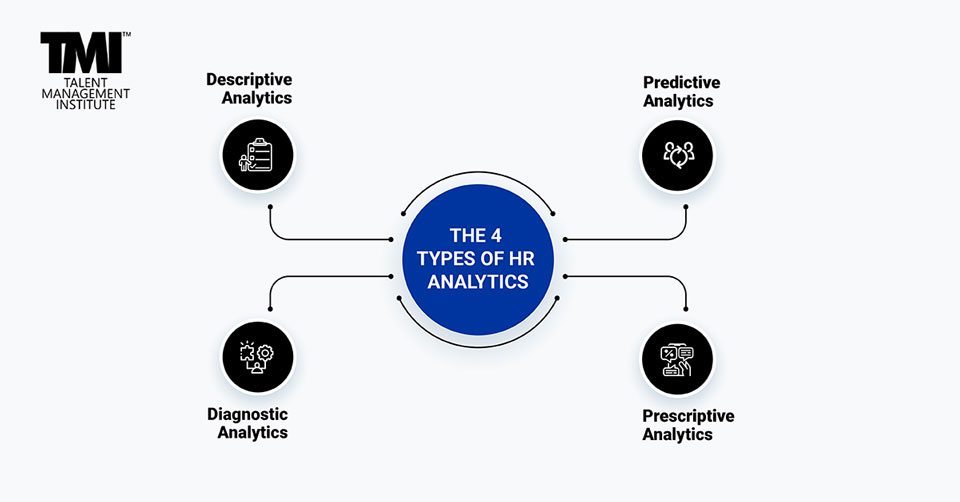
Goals are ubiquitous, whether for individuals or businesses. In the corporate context, these benchmarks of success are commonly referred to as metrics. In sales and marketing, metrics are straightforward, encompassing figures such as units sold, website conversions, customer outreach, and revenue growth percentage. However, when it comes to Human Resources (HR), the realm of metrics can be somewhat nebulous. Determining what to measure and why can be challenging, and at times, measurement itself poses difficulties. Nevertheless, the significance of HR analytics and metrics cannot be overstated. Metrics help organizations delineate their objectives, while analytics furnishes them with insights into the progress towards those objectives.
HR metrics are quantifiable parameters employed to assess the effectiveness and efficiency of HR policies. These metrics serve as yardsticks for comparing various data points. For instance, if turnover was 5% last year and has now risen to 7.5%, it signifies a 50% increase. The former are data points, while the latter represents the metric.
It's essential to note that metrics alone do not offer causal explanations; they merely gauge differences between numbers.
On the other hand, HR analytics, sometimes referred to as people analytics, involves quantifying the impact of HR-related factors on business outcomes. Analytics seeks to unravel the 'why' behind an occurrence and elucidate the consequences of that event.
Consider the following scenario: an individual expresses the opinion, "I feel like a lot of people are falling ill this month!" Such a sentiment is subjective and unverified. Data, in this case, helps substantiate the opinion. For instance, it may reveal that the absenteeism rate for the month is 12%. Even with this data, making a value judgment remains challenging, as it is unclear whether 12% constitutes a high or low figure.
To gain clarity, a benchmark or norm is needed—comparing this data with another relevant data point. If, for instance, the company's historical average absenteeism rate is 8.5%, and the national average stands at 4%, it becomes evident that this month's absenteeism rate is unusually high. This discrepancy highlights a potential issue within the company. This is where metrics come into play.
Another pertinent metric could be the 'cost of lost productivity due to absence.' To compute this metric, specific data is required.
Assuming the organization employs 60,000 individuals, each with an average annual labor cost of $45,000, the formula for the current month's cost of absence can be determined as follows:
Analytics steps in to discern causes and elucidate their impact on the business. For instance, if there is a substantial increase in employees reporting flu-like symptoms or if the incidence of flu symptoms mirrors national trends, this information can help identify the root cause.
Ultimately, the insight gained from these metrics and analytics can inform strategic actions. In the example given, the high cost of absence threatens the company's competitive position, necessitating flexible strategies for addressing employee absenteeism, such as sponsoring flu vaccinations or facilitating on-call worker deployment.
This example underscores the interplay between HR metrics and analytics.
HR analytics is a rapidly expanding field with increasing relevance for organizations of all sizes. By harnessing HR analytics, companies can access valuable insights into their workforce and make informed, data-driven decisions to optimize their talent management strategies.
There are four primary types of HR analytics:

HR professionals employ a diverse range of metrics and analytics that extend beyond the realm of human capital. These measures encompass critical processes such as employee recruitment, retention, compensation, and benefits, among others.
Recognizing the pivotal role of HR metrics, professionals in this field diligently measure a multitude of variables, from headcount to the advantages of active employee engagement. Yet, amid this extensive data collection, it is paramount to focus on metrics that truly drive the growth and success of an organization, as they illuminate the path to improvement.
Broadly, HR metrics can be categorized into six primary groups:
These essential HR metrics serve as valuable tools for HR professionals to make informed decisions, enhance organizational efficiency, and contribute to the sustained growth and success of their organizations.
To harness the power of HR metrics and analytics effectively, organizations can follow these steps:
In conclusion, HR analytics is a potent tool for HR professionals, empowering them to make informed decisions grounded in data-driven insights. The four types of HR analytics—descriptive, diagnostic, predictive, and prescriptive—offer valuable insights into the workforce, aiding in the identification of areas for improvement and driving organizational success.
As HR analytics continues to evolve and become more sophisticated, it will play an increasingly pivotal role in helping organizations achieve their business objectives and remain competitive in a dynamic business landscape.
Q- What is the difference between HR metrics and HR analytics?
A. HR metrics are specific measurements or data points used to evaluate HR processes, such as employee turnover rates or training completion percentages. They provide quantitative insights into HR activities, helping to assess current performance. In contrast, HR analytics goes beyond metrics by utilizing advanced data analysis techniques, such as predictive modeling and machine learning, to derive deeper insights from HR data. HR analytics aims to uncover underlying trends, predict future outcomes, and support strategic decision-making within an organization.
Q- Why are HR metrics and analytics important?
A. HR metrics are essential because they allow HR professionals to monitor and assess HR processes and activities, enabling them to identify areas for improvement and demonstrate the impact of HR initiatives on the organization. Metrics provide a foundation for performance measurement and decision-making. HR analytics, on the other hand, takes HR management to a strategic level. It empowers organizations to make data-driven decisions about talent acquisition, workforce planning, employee engagement, and retention. By analyzing historical and real-time data, HR analytics helps organizations optimize their human capital, enhance productivity, and gain a competitive edge.
Q- What distinguishes HR analytics from People analytics?
A. HR analytics primarily focuses on HR-specific data and processes, such as recruitment, training, and performance management, within an organization. In contrast, People analytics, while often used interchangeably with HR analytics, may have a broader scope, encompassing data from various facets of the organization, not limited to HR processes. People analytics may incorporate data from sales, marketing, finance, and other areas to gain a holistic view of how people-related factors impact the entire business.
Q- What are the 4 types of HR analytics?
A. The four types of HR analytics typically include:

CredBadge™ is a proprietary, secure, digital badging platform that provides for seamless authentication and verification of credentials across digital media worldwide.
CredBadge™ powered credentials ensure that professionals can showcase and verify their qualifications and credentials across all digital platforms, and at any time, across the planet.

Please enter the License Number/Unique Credential Code of the certificant. Results will be displayed if the person holds an active credential from TMI.